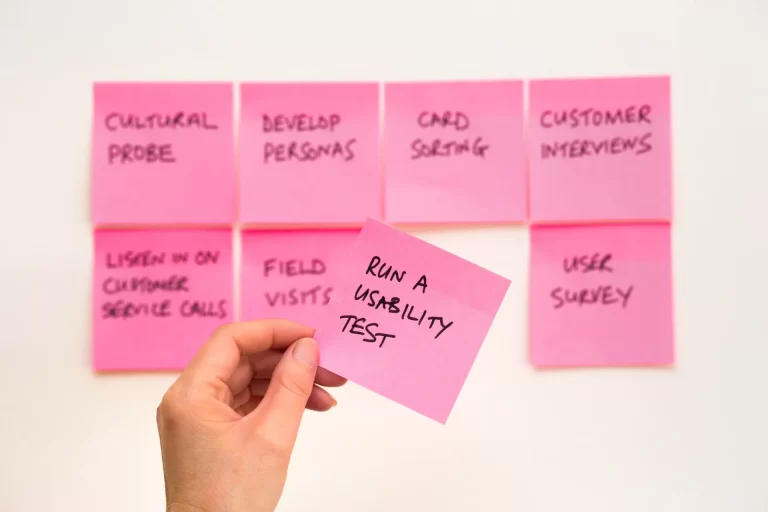Many startups consider a proof of concept an unnecessary waste of time and resources, even when there isn’t much needed. And this is a great mistake many make. While looking or seeming simple, a proof of concept can bring you more value than you think it’s worth.

So today, we’ll discuss all Proof of Concept (PoC), from what it is to how you can benefit from creating one for your product. As a bonus, we’ll be looking at some examples of POC too. Keep reading on!
What Is A Proof Of Concept (PoC)?
A proof of concept comes right after the primary idea of the product has been formed. It can be the idea of a physical or virtual product in its initial stages.
A proof of concept works as effective proof that the proposed product can work in real-life scenarios by offering a basic user experience.
If thinking from a software development perspective, you can show both the feasibility of your business idea and your app’s workability with a well-made POC and turn it into a viable product.
PoC In Software Development
The goal of a Proof of Concept in a software development scenario is to prove that a system or an application product will work as intended in real life.
The goal of a POC is not to determine product-market fit; it simply proves that a product idea can be turned into a type of MVP, and eventually a full-fledged product.
You might think POC in software development can be a bunch of developers creating a concept prototype to show that it works. Your idea isn’t too far off.
But here’s the thing: documentation and statistics regarding the product are just as important as a POC. These documentations contain:
- The processes regarding software development
- The objectives of the software itself
- Participant roles in the development process
Startup founders create POCs to convince investors that the product and business will provide the investors with a decent ROI (Return On Investment), which helps the founders collect funding.
Project Managers can also use POC to detect loopholes in the development process that might hinder the entire process.
Why Do You Need A Proof Of Concept?
Here are a few vital reasons why you will need to have a proof of concept:
- To Verify Your Core Idea
- To Help You See The Project From A Different Perspective
- To Create A Better Business Plan
- To Attract Investors and potential customers
- To Prepare For Possible Future Challenges
1. To Verify Your Core Idea
Sometimes, a product is created without performing any testing process for the actual market demand first and based on assumptions.
Here’s the thing: most of these assumptions are invalid.
With a PoC, you can validate the idea of a potential solution by introducing it to a market that needs it.
Though the responses will not always be fully positive, it’s still enough to verify your core product idea before engaging your entire product development team on the project.
2. To Help You See The Project From A Different Perspective
Your potential investors will always look at your idea, the viability of your software solution, and the overall feasibility of the core features before making an investment decision.
With detailed proof of concept documentation, you can decide if the selected tech stack is enough to fulfill the development needs.
3. To Create A Clear Business Plan
A PoC always highlights the top priorities and requirements to reach those priorities.
The insight you can gather with your PoC will allow you to create a more efficient product roadmap.
Since most startups look to cut down as many additional costs as possible, creating a PoC is a very efficient method to ensure so.
4. To Attract Investors
Most investors like to see tangible proof that the idea they are about to invest in is an idea that works. That’s where PoC comes in.
When you provide detailed documentation to the investors about the real-life use cases of your product, it’s easier to convince them to back up your development by providing additional funds.
You can also attract investors by creating an MVP for funding.
5. To Prepare For Possible Future Challenges
Even with a clear roadmap for a product, it can face many obstacles during development and execution.
A PoC can help you determine many of these obstacles beforehand and find proper solutions.
Who Can Benefit From A PoC?
1. Project Leaders
Project leaders use a proof concept to determine the overall scalability of the application.
That way, they can determine the workflow standards for distinct processes and the required resources.
2. Project Managers
POC helps the project managers implement the presented idea by determining all possible risks and obstacles the development cycle may face in the future.
It helps project managers increase the product’s chances of success and open up ways for scalability with different project management tools.
3. Stakeholders
Stakeholders will always ask for proof that any idea will bring profit and a decent ROI.
A PoC works as a rich analysis report that details every possible outcome of the product that is profitable. It’s also a complete assessment of the feasibility of the idea.
With all the informational and visual evidence, a stakeholder can assess the product better and make a better decision.
How To Create A Great Proof Of Concept In 5 Easy Steps
To have the most positive impact on your PoC, you need to create one that catches all aspects of the product.
Let’s take a look at the five steps of the Proof of Concept process:
- Step #1: Determine User Pain Points
- Step #2: Brainstorm For Possible Solutions
- Step #3: Create Your Proof Of Concept
- Step #4: Gather Feedback For Product Refinement
- Step #5: Finalize Your Proof Of Concept
Step #1: Determine User Pain Points
The core pain points of the target user base should take the utmost priority when writing a PoC report.
You can find the pain points by doing detailed research on the market infrastructures.
Note down all the possible pain points of the potential users that your product will either minimize or solve.
Step#2: Brainstorm For Possible Solutions
Now that you’ve identified all the possible pain points of the target audience, start brainstorming for every possible solution that can help your user base.
You can either do it alone or with your team.
We prefer team-based brainstorming sessions because they provide different perspectives at the same time while producing brilliant ideas.
Step #3: Create Your Proof Of Concept
After gathering all the data you could from the previous two steps, it’s time to start the PoC development.
Create detailed documentation of all the identified pain points and how your application can solve and mitigate the problems you have identified.
Step #4: Gather Valuable Feedback For Product Refinement
You can present your proof of concept to the users to refine your product idea.
Sometimes, the product that the users want can be a bit different from what you’re presenting with your PoC.
By gathering user feedback with the PoC, you can tweak the product to fit your target audience like a glove.
Step #5: Finalize Your Proof Of Concept
It’s time to finalize your PoC, and it should be done by defining all the success criteria after it starts solving the issues of the end users.
How To Present Your Proof Of Concept Document For Maximum Impact
And now, let’s look at how you can make an awesome pitch with your POC
- Define Your Success Criteria
- Provide A Timeline Estimation
- Establish The Scope of Your POC
- Determine The Resources You Need
- Present A Roadmap of Future Developments
Define Your Success Criteria
Your success metrics will define the overall feasibility of the product idea.
Your Proof of Concept shows all the necessary criteria for success based on the problem-solving capabilities of your product and overall customer satisfaction.
Provide A Timeline Estimation
A well-developed PoC should always contain a timeline estimation along with proof of feasibility.
This timeline estimation should be specific for each stage of the development, not just an approximate duration of the entire process.
That way, you ensure complete transparency with the investors by letting them know how each member was engaged with the product development process, starting from the earliest stages.
Establish The Scope of Your POC
A proper scope can only be determined through a detailed evaluation of the product’s capability to solve the issues in the target market.
Establishing a scope that accurately represents the application’s strengths and capabilities only helps you further prove the product’s feasibility.
Determine The Resources You Need
As mentioned earlier, an ideal PoC contains detailed information about the resources required to give the product a functional form.
Don’t forget to mention the resources you need and the justification for each resource so that the investors can rest assured.
Present A Roadmap of Future Developments
The roadmap is not just for the stakeholders and investors; it’s for the customers too.
When investors see scalability in a product, along with a product roadmap that offers it, they are sure to spend more after it.
The same goes for the customers. Assume a situation where they see a product promising to offer more further down the line.
In that case, it’s sure to receive more user validation, to get access to a bigger user base.
Examples Of PoC That Changed Everything
1. Leonardo DaVinci’s Armored Car
This is a historical use of a PoC in real life. DaVinci designed an armored car that could move in all directions while having multi-directional weapons.
The car offered the soldiers safety while driving around the battlefield and scattering enemy forces. The car also had a sighting turret on top for proper coordination. The car could move and rotate 360 degrees to cover all angles.
Da Vinci created a detailed sketch of the vehicles to pitch his idea. His PoC contained
- the core pain point (fighting groups of enemies)
- the way to solve it (a multi-directional car with weapons)
- the resources required to build it (steel for the vehicle and weapons, gunpowder for ammunition)
2. Bitcoin Whitepaper
Moving to a more modern example, Satoshi Nakamoto presented a whitepaper proposing the idea of Bitcoin back in 2008.
The whitepaper explained in detail how Bitcoin could be the new financial standard with the blockchain system.
He also stated how his proposed method could eliminate the problem of financial transaction fees, which got enough votes of confidence from the public to bring Bitcoin to the attention of the masses.
3. Walmart Case Study
Another great PoC example is the WalMart case study on their application of blockchain technology.
WalMart wanted better traceability of their food to react to food-borne outbreaks as quickly as possible.
They ran two different PoC campaigns in partnership with IBM. One of them was in the US to track mangoes, while the other was in China to trace their pork supply.
The process was a complete success and made the trading process faster and more efficient.
The process became so fast that they could identify the origin of their supply in seconds. This study proved Walmart’s idea to invest in blockchain completely feasible.
To Wrap It All Up
Proof of Concept may feel like an optional activity but don’t sleep on it.
It’s still one of the biggest tools for idea validation and calculating the overall feasibility of the idea in your targeted market.
If you have a startup idea, it’s best to create a detailed PoC of your idea so that you can start scaling your idea as soon as possible to bring it to life.
And if you’re looking for a trustworthy software development partner to bring your business idea to life, Impala Intech is ready to assist you in creating a functional prototype in no time!
FAQs
A Proof of Concept can help you gain a unique perspective on your project that you can use to present your idea in a way that will attract both users and investors.
Yes, it’s in the best interest of all software to create a Proof of Concept First.
If the POC can attract both users and investors who want to see the concept become a reality, then you can consider your POC successful.
Once the Proof of Concept is successful, you move on to creating a prototype based on the concept.
Yes, a Proof of Concept can be used to test different business models before going into further development of the said model.








